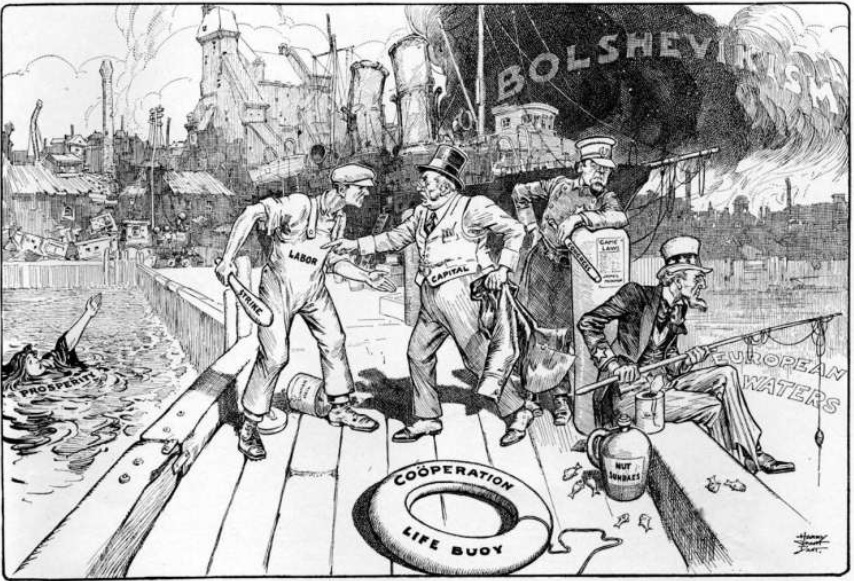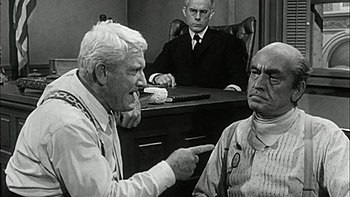|
|
NOTE: the 'Monkey Trial' is a topic on the Pearson iGCSE specification. It is not a specified topic on either the AQA or the OCR specifications, but it is illustrative of the nature of the times, and you ought to know about it.
|
Why was there a 'Red Scare'? [ALARM]The early years of the 1920s saw a 'Red Scare' that terrorist radicals were going to take over America. The panic was caused by the following factors:
|
Going DeeperThe following links will help you widen your knowledge: Basic accounts from BBC Bitesize on the Red Scare and Sacco & Vanzetti 'Reds' and 'Americans' - extensive resources on the Red Scare
YouTube The Red Scare - short documentary Sacco and Vanzetti - 1920s Channel
AQA-suggested Interpretation of Sacco and Vanzetti: Eugene Lyons on Sacco & Vanzetti
|
Results of the Red Scare
|
FACTFILE: SACCO AND VANZETTI
|
Source E
This 1919 cartoon by the American artist Harry Grant Dart is titled: 'And in the Meantime the Lady Drowns'. Click here for the interpretation
|
Consider:1. Analyse Source E. What is the message of the cartoon? 2. Study Eugene Lyons' interpretation of the Sacco & Vanzetti case
Assignment in Utopia:
|
The Scopes 'Monkey Trial', 1925FundamentalismIn the early years of the 20th century there was a move – notably in the Presbyterian Church – to re-establish what it called the fundamental truths of the Christian Faith – including beliefs such as the Virgin birth and the account of creation in the book of Genesis. In 1925, the state of Tennessee passed the Butler Act, making it illegal to teach evolution in Tennessee schools.
The Scopes TrialTo challenge this, John Scopes, a Tennessee high school science teacher, agreed to be tried for violating the Act. He was defended by Clarence Darrow, a member of the American Civil Liberties Union, and a layer famous for his defence of trade union causes. The prosecution was led by William Jennings Bryan, a former Secretary of State. The trial was a national sensation, and was remarkable because Darrow called Bryan as a witness, where he argued with him about the historicity of the Bible. At the start of the trial, the judge quoted Genesis and instructed the jury that the issue was not about the law, but simply to decide whether the law had been broken. Darrow did not challenge a guilty verdict, but argued that "we have the purpose of preventing bigots and ignoramuses from controlling the education of the United States." Scopes was found guilty and find $100, which was later overturned on the technicality that the jury should have set the amount, not the judge.
Results
|
'Religion' and 'Science' - extensive resources on the religion-science debate
The 1960 film, Inherit the Wind (see
the trailer) was loosely based on the Scopes Trial.
Source F
A 1922 cartoon used by William Jennings Bryan to support fundamentalism.
Consider:1. Using Source F and your wider knowledge of the period suggest reasons whysome Americans supported fundamentalism against science in the 1920s. 2. 'The main cause of the 'Red Scare' was fear of Bolshevism.' How far do you agree with this interpretation? 3. 'Sacco and Vanzetti were convicted because they were foreigners.' How far do you agree with this interpretation?
|
|
|
|
|
Spotted an error on this page? Broken link? Anything missing? Let me know. |
|


